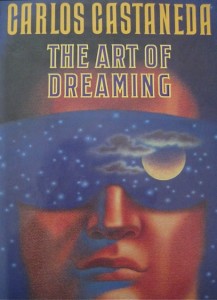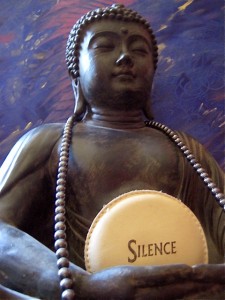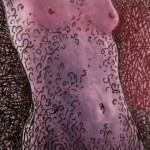
The lake rests in calm repose. Suddenly and shockingly, thunder blindsides the stillness. Zeus ravages once again; the lake is disturbed and shown its destiny. The marrying maiden is delivered to the threshold of her husband’s door.
In the case of Kuei Mei, the I Ching’s hexagram #54—The Marrying Maiden—this is not an auspicious event. This is the marriage of woman as concubine, indeed a destiny of suffering.
Buddha discovered that LIFE itself is suffering. As beings born into this world we are all stamped as concubines, and we only fully grasp this notion as we understand that the circumstances of our births, the stamps of our destinies, require us to fully suffer those destinies. We cannot escape them. Even if we refuse them through denial, delusion or death, we cannot escape the controlling hands of our destinies. We cannot change the reality of what or who we are. Our challenge is to fully discover, become, and accept that which we are. And then we are free to truly dream it forward, that is, to choose.
Once we embrace our destiny we are free to dream it into new worlds of possibility and fulfillment, untethered to the destiny of our origins. But, until then we must suffer.
It was my stamp, my destiny, to repeatedly suffer the ravages of rape and alcoholic violence foisted upon my mother as I lay in frozen stillness, incubating in the embryonic pool of her womb. Like the calm lake in hexagram #54, I had to withstand the sudden thunder and lightning that came from outside, in the form of my abusive father. My destiny was PTSD, PTSD in oneness with my pregnant mother.
My choice, after decades of discovering my destiny—who I am—has been to dream that destiny forward, as a therapist discovering an evolutionary advance for PTSD, dreaming it forward as a gateway to infinity. Arrival at that gateway—being released from the confines of destiny—through deep inner work, leads to choice and real freedom.

The journey from destiny to choice is multifaceted. Most prominent is the facet of recapitulation. Every day we are triggered by our spirit to recapture the deepest truths of our destiny. We are asked by our own fears and stumblings in everyday life to wake up to where we’ve been and who we are, right down to the elemental essence of our conception. That joining of genes is the stamp of our individuality, the formative journey of our material beings, sending us off on our destinies. Just as I was stamped in my mother’s womb, so are we all.
Until we can feel and know all that we are, all that we’ve been through, we suffer the limitations of beings not ready to fully know ourselves. Of necessity we are held back from the full truth of our heritage and personal history and remain caught in revisionist lives. We remain blinded by false beliefs of who we are, struck by the glare of the thunder and lightning of our lives. We remain stuck in a concubine world.
In recapitulation, we gather up and recondition our parts, the fragments of our destined selves. We reclaim and rejoin with our true selves, experiencing revitalized energy as we recapitulate. Along the path we are challenged to face our victim status, i.e.: None of it was fair. None of it was okay. We didn’t deserve it. It’s not supposed to be this way. They shouldn’t have been allowed to do that. All of this, and much more, is true. It must be acknowledged; yet, beyond that, the truth is that destiny is not fair. The world of the concubine is not fair. Destiny, however, is an experience seeker, a unique combination of energy—a “probe of awareness,” as the shamans would say—sent out in search of new experience.

Destiny has no morality. It just is. We awaken to our destiny and seek to make it pleasurable, meaningful, and fulfilling. That is our predilection, the stamp of our humanness. And so, as humans we naturally challenge ourselves to evolve our destinies beyond their victim, concubine, origins. To remain in the victim range is to limit ourselves to the concubine world, far from dreaming our destinies forward. But, the truth is, it’s a formidable task to release our destinies from the human judgment of victim. And, yes, “victim” is a human judgment, for destiny carries no such judgment. It simply is. It simply seeks to evolve, asking us to work with what we got in order to break away from the victim, concubine, world we find ourselves in everyday.
All judgments—though so humanly necessary, as we scrutinize and come to know ourselves and our world—are, ultimately, obstacles to full self-acceptance, as much of what we are, what we’ve done, and what we’ve been exposed to, is often truly unacceptable. To arrive at truth, we must release the human judgments of acceptability and unacceptability. We must fully open up to what is, and, most especially, to what was. Suspend judgment, Carlos Castaneda recommended, as the fundamental resource to discovering who we are and who we might fully become.
Destiny and choice, seeming opposites, are actually a pair of inseparable twins, though in this concubine world destiny births first, followed by choice. Allow the full birth of your own destiny, through recapitulation of the concubine world you now live in, and birth your choice.
Still choosing to dream it forward,
Chuck











